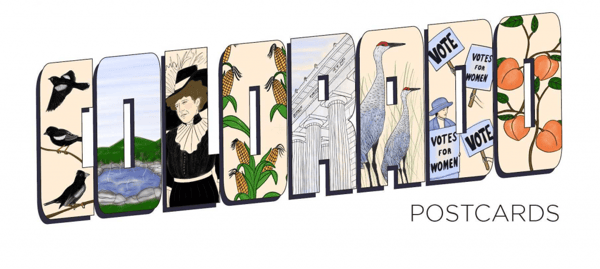To withdraw funding already promised and approved will impact local communities by weakening and possibly closing local stations.
By STEWART VANDERWILT
The Trump Administration has drafted/issued a memo to Congress that would end nearly all federal funding for public broadcasting. The intent is to take back the funding that has previously received bipartisan Congressional approval for the Corporation for Public Broadcasting in order to defund PBS and NPR. The reality of this action will be felt in local communities across the country, and in Colorado there will be no greater impact than in the 3rd Congressional District.
There are more local and independent public broadcasting stations receiving federal support along the Western Slope and Southern Colorado than any other part of Colorado combined.
In Alamosa, Aspen, Carbondale, Cortez, Crested Butte, Durango, Grand Junction, Ignacio, Paonia and Telluride, these stations provide news, information, emergency alerts and community connection that can only be done from within their communities. These services can’t be replaced by an internet feed of news from a national source. They’re powered by human voices — people who show up in and for their communities each day — creating an impact unmatched by other media.
Local public radio and television stations are not partisan organizations, they are a direct reflection of the people who live and work in their communities.
There is nothing partisan about a real-time tornado warning, school closure alert during a winter storm or information about a fast-moving wildfire threatening lives and property. There is nothing partisan about a Colorado Postcard illuminating our state’s history on Colorado Public Radio or a morning report on avalanche conditions on KAJX in Aspen. There is nothing partisan about a Colorado musician sharing their music with listeners in their hometown or statewide broadcast of classical concert from a mountain festival. In parts of Colorado, public radio is the only reliable, free, over-the-air broadcast service delivering this information and cultural connection.
The federal investment in public broadcasting is about $1.60 per American, and in Colorado it is well used. Below are a few examples of these vital services.
KVNF (Paonia) serves a 10,000-square-mile area of mostly rural communities, including the only broadcast emergency alerting service for Lake City. KVNF is also a destination for musicians seeking to build an audience through broadcast interviews and performances. It provides real-time announcements on the movement of livestock across local roads, protecting motorists and livestock alike. Finally, KVNF provides the only daily radio broadcast of regional news, and without it there would be a void that adds to the “news deserts” plaguing rural, western Colorado.
Aspen Public Radio (Aspen) is a leading partner in efforts to provide Spanish-language local news to the Roaring Fork and Colorado River valleys, broadcasts a daily “Ski Report” in the winter and “Outdoor Report” in the summer to connect listeners to conditions and events, and as the only public broadcaster in Pitkin County, the station is relied on for any kind of emergency communication, including wildfire evacuation. This spring, the station broadcast live local election debates for upcoming mayoral and city council races so that voters could hear unscripted responses to pressing questions about major issues facing the community directly from those running.
KSUT (Ignacio) is located on the Southern Ute tribal campus and serves southwest Colorado and northwest New Mexico — regions with extremely limited or non-existent cellphone and internet service. As such, KSUT provides life-saving emergency information to some of the state’s most remote regions, including Southern Ute and Ute Mountain Ute communities, with a reach to over 250,000 individuals. KSUT and KSJD in Cortez recently collaborated in sharing a full-time news reporter to highlight stories that would otherwise have gone unreported. In partnership with Rocky Mountain Public Media and Fort Lewis College, KSUT’s innovative Tribal Media Center offers multimedia storytelling training to Indigenous community members, with a goal of increasing the distribution of original content to a broad demographic throughout North America.
Colorado Public Radio, with stations across the state, provides news, classical music and indie music with a focus on what’s relevant to Coloradans. CPR employs the only Colorado journalist in Washington, D.C., providing news coverage of our elected delegation and federal agencies impacting our state. Ninety percent of the population of Colorado lives within reach of a CPR broadcast signal. CPR brings news and music to regions that might otherwise be overlooked by traditional media.
These and other public broadcasting stations across Colorado collaborate to bring statewide information to their communities that could not be done on their own. They frequently share broadcasts of important statewide events, such as the governor’s State of the State address. They partner to share reporters and coverage through Rocky Mountain Community Radio and the Colorado Capitol News Alliance. They are a model of efficiency and collaboration.
To withdraw funding already promised and approved will impact local communities by weakening and possibly closing local stations. The local information ecosystem will be damaged, which hurts everyone in the community. It would impact more than 160 employees in the 3rd Congressional District and more than 550 across the entire state; and nearly 500 volunteers whose dedication to the community is reflected in their commitment to preserving public broadcasting in Colorado.
This is a critical time for public broadcasting in our community. The president’s proposal to cancel previously approved federal funds requires congressional action, which is expected to take place soon.
These funds exist because of bipartisan support and it will take bipartisan support to preserve them. If you wish to save public broadcasting across Colorado, I urge you to let your representative know that public broadcasting is important to you and your community.
Tell your representatives that you support public media at ProtectMyPublicMedia.org.
Stewart Vanderwilt is the president of Colorado Public Radio. This editorial was first published in the Daily Sentinel on April 26, 2025.
